Jordan B. Peterson's Blog, page 33
March 29, 2018
Biblical Series VIII: The Phenomenology of the Divine Transcript
The post Biblical Series VIII: The Phenomenology of the Divine Transcript appeared first on Jordan B. Peterson.
March 27, 2018
New Tour Dates
Demand for the original 12 Rules for Life April-June tour venues and cities, listed here, was high enough so that we added 24 more lectures and conversations, below. The majority of these will be talks based on Dr. Peterson's new bestselling book, 12 Rules for Life, which will be opened by Dave Rubin of The Rubin Report.
The post New Tour Dates appeared first on Jordan B. Peterson.
On the ark of the covenant, the cathedral, and the cross: Easter Message I
There has to be a bridge between the finite and the infinite. There has to be a place where the ephemeral meets the eternal. There has to be a bridge between the knowable and the unknowable. There has to be bedrock at the foundation. The ark, which is the portal to God, is to be
The post On the ark of the covenant, the cathedral, and the cross: Easter Message I appeared first on Jordan B. Peterson.
March 23, 2018
On the so-called “Jewish Question”
The players of identity politics on the far right continue ever-so-pathologically to beat the anti-Semitic drum, pointing to the over-representation of Jews in positions of authority, competence and influence (including revolutionary movements). I’m called upon–sometimes publicly, sometimes on social media platforms–to comment on such matters, and criticized when I hesitate to do so (although God only knows why I would hesitate 
March 22, 2018
Kwakwaka’wakw controversy








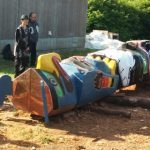



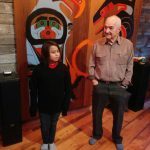

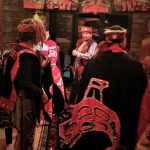

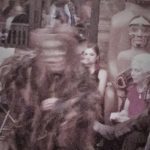
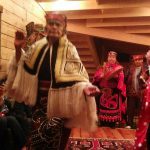
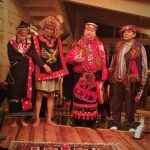
Last week, Pankaj Mishra @nybooks offered his opinions about my life and my work in the New York Review of Books. He also touched upon my affiliation with Kwakwaka’wakw artist Charles Joseph (www.charlesjoseph.ca). Other journalists have since jumped on the bandwagon, so I thought I better set the story straight, insofar as I am capable of doing so.
Mishra’s essay is by no means laudatory, but that’s beside the point. Like everyone else, he has the right to his opinion. Furthermore, I have been criticized continually for the last two years by people who regard themselves as my enemies and, while I haven’t precisely become accustomed to that, a single addition to the large stack of such commentaries is not in and of itself notable. It wasn’t even his assertion that I am a fascist–a term that should used judiciously, given its history–that was bothersome. But it is in the interest of idiot radicals everywhere to insist that every person who thinks that their policies and ideologies are reprehensible must be an extremist. After all, if reasonable people arise to object, perhaps something unreasonable is actually occurring….
Here’s a conundrum for the radical types, unmitigated egalitarians included: obviously, things can be taken too far on the right. It is equally obvious (although stubbornly unacknowledged) that things can be taken equally too far on the left. Aren’t the totalitarian horrors of the twentieth century sufficient indication of that? So, exactly when has the left gone too far? It’s not so easy to say, and this is a big problem. On the right, you can point to claims of racial superiority, or to the desire for racial segregation, say without hesitation “you’ve gone too far” and separate yourself from those making the claim, even if you’re a conservative. What do you use for a similar marker on the left? I’ve suggested DIE: Diversity, Inclusivity and Equity, with “equity” (the demand for equality of outcome) as the most reliable red flag. I’m open to other suggestions, but I don’t see them pouring in from the unreasonable or even the reasonable left. This is part and parcel of the leftist ideologues’ refusal to deal directly with the mayhem and bloodshed of the communist era and the indisputable relationship between that mayhem and the ideology itself.
Easier just to call anyone who calls out extremism on the left a fascist. Easier, but not helpful, and also indicative of refusal to draw a necessary line. Let’s call it willful blindness and leave it at that.
Back to Mishra: He doesn’t care for me, or my work, and he thinks it’s ok to bandy about vicious, unwarrranted and libelous terms. Fine. But he’s also a master at casting underhanded aspersions, and doesn’t really seem to care about their veridicality. He states, for example, that I “claim” I was inducted into the Pacific Kwakwaka’wakw tribe. Now you don’t use the term “claim” unless there is reason to assume the opposite. Thus his phrasing indicates the existence of some doubt about the facts. Worse, and directly after, he states: “Peterson may seem the latest in a long line of eggheads pretentiously but harmlessly romancing the noble savage.” I found the combination of those aspersions absolutely unacceptable.
First, I’m not making a “claim.” I did receive a Kwakwaka’wakw name (Alestalegie: Great Seeker) and so did my wife (Ekielagas: Kindhearted Woman) in the course of two different and extensive ceremonies.
Second, and more importantly, and right to the point: I’m not “romancing” any “noble savage.”
With regard to the first of Mishra’s poison-tongued comments: Our Kwakwaka’wakw names were granted to us in a two-part ceremony. The first involved a potlatch at Fort Rupert which was hosted by the man who arranged to have us named. His name is Charles Joseph. He’s also known as Boone. He is, in my opinion, an outstanding First Nations artist/carver (see www.charlesjoseph.ca). Several hundred people from the Fort Rupert community, and about a dozen of my friends and family members attended the potlatch, which was the first held by his family in forty years, and which occurred May 26 in 2016. The entire ceremony, which lasted about sixteen hours, was videotaped. It involved a series of songs and dances, some serious, some comedic, all traditional (with the updates necessary for the modern world). We participated in one dance, and exchanged gifts, as a precursor to the naming ceremony itself, which was held in November of 2016, and which was attended by several Kwakwaka’wakw chiefs, as well as Charles, who all flew out to make it official. I was also granted a copper, a symbolic shield, which is a territorial marker and signal of wealth (in the best sense) and prestige. It’s hanging on the third floor of my Toronto home, which I transformed, with Charles’ help and the efforts of my wife and a local architectural firm and a plethora of very hard working, dedicated and skillful contractors and tradesmen into a modern analog of a Kwakwaka’wakw big house (in part to introduce Kwakwaka’wakw culture to Eastern Canada). I have appended photographs of the potlatch, my home ceremony (as well as an image of a copper, which I took from the net, not having a photo with me here in New York as I am writing). So there’s no “claim.” Just typing that word infuriates me. There’s a well-documented series of events attested to (if anyone cares) by literally hundreds of people in two ceremonies with hundreds of photos and a complete video account by a professional camera crew. That’s not a “claim,” even in this post-modern world. That’s a fact.
Perhaps there is some ambiguity about what exactly that means in relationship to Charles’ family and the larger social grouping of the Kwakwaka’wakw people. It’s not as if they’re an entirely homogeneous group with regard to their political or personal beliefs, biases, and prejudices. It seems as though some are not happy with what my naming signifies, and that there is some debate about its precise cultural, tribal and social meaning. But none of that means I am “claiming” anything. It just means that life is complicated—and, more specifically, that reaching across great cultural divides is complicated.
With regard to the second of Mishra’s poison-tongued comments: For starters, I’m no believer in the romance of the “noble savage.” In fact, the exact opposite is true. I wrote as much that in my new book, 12 Rules for Life. This is just another indication of Mishra’s absolute willingness to play fast and loose with the truth. I’m going to quote at length from my book to justify my point:
The Ignoble Savage
It has been said that every individual is the conscious or unconscious follower of some influential philosopher. The belief that children have an intrinsically unsullied spirit, damaged only by culture and society, is derived in no small part from the eighteenth-century Genevan French philosopher Jean-Jacques Rousseau. Rousseau was a fervent believer in the corrupting influence of human society and private ownership alike. He claimed that nothing was so gentle and wonderful as man in his pre-civilized state. At precisely the same time, noting his inability as a father, he abandoned five of his children to the tender and fatal mercies of the orphanages of the time.
The noble savage Rousseau described, however, was an ideal—an abstraction, archetypal and religious—and not the flesh-and-blood reality he supposed. The mythologically perfect Divine Child permanently inhabits our imagination. He’s the potential of youth, the newborn hero, the wronged innocent, and the long-lost son of the rightful king. He’s the intimations of immortality that accompany our earliest experiences. He’s Adam, the perfect man, walking without sin with God in the Garden before the Fall. But human beings are evil, as well as good, and the darkness that dwells forever in our souls is also there in no small part in our younger selves. In general, people improve with age, rather than worsening, becoming kinder, more conscientious, and more emotionally stable as they mature. Bullying at the sheer and often terrible intensity of the schoolyard rarely manifests itself in grown-up society. William Golding’s dark and anarchistic Lord of the Flies is a classic for a reason.
Furthermore, there is plenty of direct evidence that the horrors of human behaviour cannot be so easily attributed to history and society. This was discovered most painfully, perhaps, by the primatologist Jane Goodall, beginning in 1974, when she learned that her beloved chimpanzees were capable of and willing to murder each other (to use the terminology appropriate to humans). Because of its shocking nature and great anthropological significance, she kept her observations secret for years, fearing that her contact with the animals had led them to manifest unnatural behaviour. Even after she published her account, many refused to believe it. It soon became obvious, however, that what she observed was by no means rare.
Bluntly put: chimpanzees conduct inter-tribal warfare. Furthermore, they do it with almost unimaginable brutality. The typical full-grown chimp is more than twice as strong as a comparable human being, despite their smaller size. Goodall reported with some terror the proclivity of the chimps she studied to snap strong steel cables and levers. Chimps can literally tear each other to pieces—and they do. Human societies and their complex technologies cannot be blamed for that. “Often when I woke in the night,” she wrote, “horrific pictures sprang unbidden to my mind—Satan [a long-observed chimp] cupping his hand below Sniff’s chin to drink the blood that welled from a great wound in his face… Jomeo tearing a strip of skin from Dé’s thigh; Figan, charging and hitting, again and again, the stricken, quivering body of Goliath, one of his childhood heroes.” Small gangs of adolescent chimps, mostly male, roam the borders of their territory. If they encounter foreigners (even chimps they once knew, who had broken away from the now-too-large group) and, if they outnumber them, the gang will mob and destroy them, without mercy. Chimps don’t have much of a super-ego, and it is prudent to remember that the human capacity for self-control may also be overestimated. Careful perusal of book as shocking and horrific as Iris Chang’s The Rape of Nanking, which describes the brutal decimation of that Chinese city by the invading Japanese, will disenchant even a committed romantic. And the less said about Unit 731, a covert Japanese biological warfare research unit established at that time, the better. Read about it at your peril. You have been warned.
Hunter-gatherers, too, are much more murderous than their urban, industrialized counterparts, despite their communal lives and localized cultures. The yearly rate of homicide in the modern UK is about 1 per 100,000. It’s four to five times higher in the US, and about ninety times higher in Honduras, which has the highest rate recorded of any modern nation. But the evidence strongly suggests that human beings have become more peaceful, rather than less so, as time has progressed and societies became larger and more organized. The !Kung bushmen of Africa, romanticized in the 1950s by Elizabeth Marshal Thomas as “the harmless people,” had a yearly murder rate of 40 per 100,000, which declined by more than 30% once they became subject to state authority. This is a very instructive example of complex social structures serving to reduce, not exacerbate, the violent tendencies of human beings. Yearly rates of 300 per 100,000 have been reported for the Yamomami of Brazil, famed for their aggression—but the stats don’t max out there. The denizens of Papua, New Guinea, kill each other at yearly rates ranging from 140 to 1000 per 100,000. However, the record appears to be held by the Kato, an indigeneous people of California, 1450 of whom per 100,000 met a violent death circa 1840.
Because children, like other human beings, are not only good, they cannot simply be left to their own devices, untouched by society, and bloom into perfection. Even dogs must be socialized if they are to become acceptable members of the pack. Children are much more complex than dogs. This means that they are much more likely to go complexly astray if they are not trained, disciplined and properly encouraged. This means that it is not just wrong to attribute all the violent tendencies of human beings to the pathologies of social structure. It’s wrong enough to be virtually backward. The vital process of socialization prevents much harm and fosters much good. Children must be shaped and informed, or they cannot thrive. This fact is reflected starkly in their behavior: kids are utterly desperate for attention from both peers and adults because such attention, which renders them effective and sophisticated communal players, is vitally necessary.
That should make it clear that I’m not involved in any romance of the noble savage type.
More importantly, Charles is not to be referred to as a “savage”—noble or not—by any viperous scribbler with an obvious agenda without immediate objection on my part. Seriously. And I can tell you that if a centrist or conservative writer would have used such terminology they would have been immediately ripped to shreds by the faux-compassionate hyenas of the radical left.
Simply put: Charles is an artist whose work I admire, and he is my friend. I met him about fifteen years ago at a craft fair in Comox, British Columbia, on Vancouver Island. I had been convinced to attend by my wife, after objecting to the likely presence of hippies who are too old for their hippiedom to be justifiable and dream-catchers and perfumed soap and candles and little else. But it was a beautiful day, and I let her talk me into going. I wandered around the tents and booths, listening to the musicians, and relaxed a bit. Charles was there, too. His wife had also encouraged him to attend, but as a presenter, rather than an attendee. He had set up a tent and arrayed some of his carvings outside, where their striking-cut-above-the-rest quality attracted my eye. I’ve always loved West Coast art, whether Haida, Tsimshian or Kwakwakw’wakw. I walked into Charles’ tent, and started to talk to him. We spoke intently for about an hour. He showed me a photo portfolio, documenting his extensive work, with its wide range of style and deep artistry. He spoke a bit of his horrifying residential school past, about which I learned far more over the following years. Perhaps all the residential schools set up by church and government in Canada were not little islands of evil, but the naked brutality inflicted upon Charles and his peers at St. Michael’s cannot be described in any other way.
I bought a few small carvings that day, but I told Charles that he could send me a major piece every three to six months and that I would pay him what he thought it was worth and that we would see how that went.
That continued for about ten years, during which time I bought about the same number of pieces: an eagle, a raven, a crooked beak mask, two sun masks, a wild woman, and so on. I also purchased several pieces for my family. During this time, we talked, a lot. He told me about in detail about his residential experiences: events he had recounted to no one (and no wonder). He told me about his dreams, which are inhabited by the very characters that he carves, in their traditional Kwakwaka’wakw form (something I found exceptionally singular and interesting). We talked about Christianity, and its complex and often destructive relationship with the Kwakwaka’wakw people (many of Charles’ relatives are Christian, but that adds, rather than detracts from the complexity). We talked about the redeeming power of art, and the role such redemption played in Charles life. We talked about the challenges of Canadian/First Nations relationships. We traveled to Ottawa together to attend Peace and Reconciliation ceremonies. I listened to the stories that accompany each mask, and tried to understand their psychological, mythological and practical significance.
About five years ago, I was thinking about adding another level to my two story semi-detached downtown Toronto house. I thought, first, of building a log cabin as a third floor. My wife Tammy and I missed the country and thought we might bring it into the city in that manner, and we had a friend in the city who had a log-cabin like outbuilding behind his house a few blocks away. While contemplating this idea, however, I had a vision of the figures depicted in the Kwakwakw’wakw mythic panoply (the gods, if you will) coming East across the Rocky Mountains in the clouds. So I called Charles and told him that, and also spoke to him about my building plans, and started to formulate the idea of building not a log cabin but a big house with totem poles and carvings. I asked him if he wanted to come to Toronto and meet my architect and discuss the idea. He agreed, although he had not flown anywhere before and had not been farther east than Calgary.
A couple of months later, he arrived. We started to design the third floor. I commissioned two eight foot totem poles, an eleven foot sisuitl (a double-headed dragon or sea serpent) to span the poles, a nine foot welcome figure, and a ten by ten painted cedar panel. I also introduced him to someone who set the wheels in motion for two very large commissions: a forty foot canoe, eventually delivered to Montreal, and a fifty-three foot totem pole portraying the events at the St. Michael’s residential school (which ended up placed outside the Montreal Museum of Fine Art in 2017 (see https://www.mbam.qc.ca/en/news/unveil...) at a ceremony which my family and I attended.
We finished the third floor in December of 2015. It is modeled, as I said, on a Kwakwakw’wakw big house, but is also paneled in wood taken from my great-grandfather’s original wood buildings from his 1905 homestead in Saskatchewan.
Charles and I have been involved in an exceptionally interesting, unlikely and fruitful collaboration for fifteen years. We’ve managed to carefully and attentively bridge the gap between our cultures and situations.
I just spoke to him tonight, as one Robert Jago, another journalist writing, this time, for the Walrus, has published his piece (https://thewalrus.ca/the-story-behind-jordan-petersons-indigenous-identity/). Jago is another innuendo-peddler, trying to stir up trouble, because he has nothing better to do, and harbors resentments a-plenty. Charles said, “they’re all trying to pick and pick at things they don’t understand.” Jago accuses me of exploiting my connections with Charles to fend off accusations of racism, and uses a joke I tweeted to a friend of mine a few years ago after he had a comical experience with some bourbon and a native American woman in Kentucky as an indication of my appalling true motivations. Just an aside: we’re at a point where comedy is suspect. That’s not good.
Robert Jago is as chock full of underhanded allegations, in his own way, as Mishra. And none of this has anything to do with Charles: it’s just a further attempt by those who don’t like my criticism of the radical left to bring my name into disrepute, by any means possible. I think it’s particularly telling that they would use the genuine attempts on the part of Charles and I to bridge the very gaps they decry as oppressive and tyrannical so vociferously as evidence that I am somehow a part of the reprehensible right.
Here’s how it looks to me, plain and simple: I started my friendship and collaboration with Charles long before becoming embroiled in the political controversy that has swirled around me for the last two years. It was based first on genuine and profound admiration for Charles’ art and tradition and second on personal liking and admiration for him and genuine and profound respect for him. It wasn’t political, and it still isn’t, except accidentally. It was aesthetic and personal. Charles makes carvings and paintings. I purchase them, and support him, because I regard him highly and admire his art. We talk at length about what they mean. In that manner, I learn about his culture, but not because I think it’s political correct. I don’t care about any of that. In fact, I detest it (as I suppose is rather obvious by now). He has also learned about mine, and has reason to distrust it somewhat less. Great. That’s one small move toward peace and reconciliation in a country that is theoretically desperate for such things (but practically lacking in any real attempts to bring it about). And nothing of that sort occurs without some error and misunderstanding.
Charles and I have expanded our collaboration over time, and that has brought nothing but good (excepting this controversy), including, as a byproduct (and I am not taking credit for this, but pointing it out as part of the expanding consequence of our friendship) the totem pole in Montreal. He has also been invited to New York later this year to display his work in a prestigious local gallery.
I wrote about him in 12 Rules for Life, as well:
After the experience of terrible atrocity, isn’t forgiveness just cowardice, or lack of willpower? Such questions torment me. But people emerge from terrible pasts to do good, and not evil, although such an accomplishment can seem superhuman. I have met people who managed to do it. I know a man, a great artist, [thrown into a brutal school] as an innocent five-year-old, fresh from a long stretch in a hospital, where he had suffered measles, mumps and chicken pox, simultaneously. Incapable of speaking the language of the school, deliberately isolated from his family, abused, starved and otherwise tormented, he emerged an angry, broken young man. He hurt himself badly in the aftermath with drugs and alcohol and other forms of self-destructive behaviour. He detested everyone—God, himself and blind fate included. But he put an end to all of that. He stopped drinking. He stopped hating (although it still emerges in flashes). He revitalized the artistic culture of his Native tradition, and trained young men to continue in his footsteps. He produced a fifty-foot totem pole memorializing the events of his life, and a great canoe, forty feet long, from a single log, of a kind that had never been produced before. He brought his family together, and held a great potlatch, with sixteen hours of dancing and hundreds of people in attendance, to express his grief, and make peace with the past. He decided to be a good person, and then did the impossible things required to live that way.
If the chattering heel-biters of the left disapprove of all this, let them do something better.
P.S. Jago and his ilk also claim (or imply, which is more to their taste) that I have “used my links with the with the Kwakwaka’wakw people as a shield against accusations of racism.” So let’s take that apart a bit.
First, I am in all probability just as rife with in-group preferences and familiarity biases as the next person. Maybe more. Who knows what evil lurks in the heart of men, as the Shadow himself once informed the masses (look it up). Why wouldn’t I be? I have never claimed that butter wouldn’t melt in my mouth. I know perfectly well that tribal affiliations are part of default human nature (although not the only part) and that such preferences can produce vicious, violent and catastrophic consequences. I have been teaching my students exactly that for more than three decades, and I don’t ever assume that my lessons somehow don’t apply to me. Furthermore, I had a rough time, on occasion, with native kids, growing up (as I detail in 12 Rules for Life) although I had some friendships–some tenuous, some more robust–as well. The existence of racial tension in Western Canada is no secret and it’s no easy thing to accept and confront, let alone rectify. What all that means for me is what it means for everyone else: some degree of discomfort with people who are different is likely, at least in the absence of significant exposure and familiarity (note the word “family” lurking in the latter term precisely for that reason) and some conscious effort to overcome that might usefully be made. So I’m making exactly that effort.
Second, why wouldn’t I use evidence of my willingness to extend my hand and more across the racial and cultural differences that divide us in Canada as defence against accusations of racism? It is certainly possible to construe that as a “shield,” as Jago writes (implications always at the ready). But here’s something to consider–and something that actually happened, rather than something hypothetical: The day of the naming ceremony held at my house, attended by 50 or so people (including about a dozen members of the Kwakwaka’wakw people who had traveled from Vancouver Island) was the very same day I was being loudly accused of racism, misogyny, Islamophobia, transphobia and even Nazi sympathies at a demonstration at the University of Toronto (and in a significant proportion of the attendant press coverage), simply because I had objected to my government’s decision to kowtow to the radical left and propose compelled speech provisions, under the ever-useful-to-wannabe-totalitarians guise of compassion. Is it entirely unreasonable to note the irony of that juxtaposition?
Third, and finally: Why is it unacceptable for me to defend myself against the constant allegations made against me with evidence, not of tolerance (a word mouthed to death by the pathological egalitarians) but of actual efforts to make a small but real personal difference in the actual lives of actual people? How should I defend myself? With feeble pleas of innocence and willingness to accept the tender mercies of those who consider themselves my enemies? What’s their claim, exactly: Dr. Peterson formulated a relationship with a Kwakwaka’wakw carver fifteen years prior to his entanglement in the political mire to shield himself against all future claims of racism? I’m not Dr. Evil, folks. I just don’t have that degree of foresight.
P.P.S. I decided against talking to Jago because Charles and I, after substantial discussion, jointly decided that he was a muckraker with an agenda and not to be trusted to deal straight with any information we might provide. Charles talked with him initially but after doing so pulled away and refused to continue. I see little evidence in his article that we misread his character. Think of it this way: why did he write the article? What’s the story here? On the surface, it’s my purported misrepresentations and self-shielding. (You can read what I wrote above and decide for yourself what those might be.) A little deeper: it’s part of continued efforts on the part of those whose political and ethical position I detest to pillory me, personally, because they are incapable of responding to me intellectually or morally.
The post Kwakwaka’wakw controversy appeared first on Jordan B. Peterson.
March 19, 2018
#42 – March Patreon Q & A
Every month, I answer questions from the generous people who support me on Patreon. This is the Patreon Q & A from March 2018.
0:48 Patreon Q#1 – What should teaching and research in the humanities look like? I’m going to grad school for literature and I don’t want my work to serve ideological possession.
3:07 Patreon Q#2 – Have you thought about slowing down? There are people worried about how hard you’re pushing yourself with the countless commitments.
5:06 Patreon Q#3 – Many who respect your work feel your tweets are often impulsive (or even expedient) in certain interactions. Would you consider a change in the way you tweet?
12:25 Patreon Q#4 – What of a client’s need for autonomy/identity in therapy; they would prefer that which is meaningful and therefore under their control; is this not unhealthy?
17:59 Patreon Q#5 – Any update on your plans to start providing independent classes or an online university?
20:55 Patreon Q#6 – I married young and have had only 1 sexual partner. Now I desire variety, but value my marriage and will not cheat. Any insight on overcoming this conflict?
24:27 Chat Q#1 – Why do you not discuss religious fundamentalism more often and more in depth? Many people consider you a religious apologist as a consequence.
30:04 Patreon Q#7 – I’ve been trying to listen to my conscience but I can’t tell the difference between fear, willful blindness or genuine conscience.
37:55 Patreon Q#8 – I’ve watched many hours of your videos, but I don’t think I’ve ever heard you describe yourself on the big 5 model. Care to tell us how you rank on each trait?
40:47 Patreon Q#9 – My wife and I found out early in the year we may not be able to have children, then last month I was diagnosed with cancer. How do I combat depression?
49:08 Patreon Q#10 – Please give your perspective on why polyamory is bad for the individual and society.
54:35 Patreon Q#11 – How do you think altered state of consciousness or shamanic experiences can/should be integrated into modern life and scientific thought?
57:42 Patreon Q#12 – I don’t even have the conscientiousness to sit down and do Self Authoring. I bought it over a year ago and haven’t opened it. What the hell is wrong with me?
1:03:34 Patreon Q#13 – My wife says I am like you i.e. obsessed by ideas, and seldom want to talk about much else. She wants me to ask if your wife is ever annoyed by it, haha.
1:05:35 Patreon Q#14 – Hi Dr. Peterson, I am a member of the translators who translate your video into Chinese. How can I speak the truth and survive in China and protect my family?
1:08:50 Patreon Q#15 – My brother committed suicide, and I’m taking care of my sister’s kids (ages 7, 3) until she’s stable. How can I help them cope with the loss of their uncle?
1:12:09 Patreon Q#16 – I’m a minority, my kids are mixed. I RESENT the disempowering narrative of victimhood being handed to them. It’s lazy and offensive. How to arm them against it?
1:15:28 Patreon Q#17 – Sam Harris has accused you of sophistry in your Bible lectures. How do you draw the line between sophistry and a valid reading?
1:21:26 Patreon Q#18 – How is it that society has not learned from history about the dangers of socialism, Marxism, ideology, etc after years? How do Marxists get away with it?
1:27:11 Patreon Q#19 – I am 46, retired executive, wealthy, competent, and full of juice. Who can I talk to if I want to invest time/money/energy in your university?
1:30:00 Patreon Q#20 – I am a sober alcoholic/drug addict. How can I find my way back to belief in a higher power after 10 years in the empty void of atheism? I’m falling apart.
Relevant links:
Original Video: https://www.youtube.com/watch?v=c-kWEDr6VS0
12 Rules for Life: An Antidote to Chaos: https://jordanbpeterson.com/12-rules-…
Jordan B Peterson Website: http://jordanbpeterson.com/
Self Authoring Suite: http://selfauthoring.com/
Understand Myself personality test: http://understandmyself.com/
Podcast: https://jordanbpeterson.com/jordan-b-…
Reading List: https://jordanbpeterson.com/2017/10/g…
Twitter: https://twitter.com/jordanbpeterson
Patreon: https://www.patreon.com/jordanbpeterson
.fusion-widget-area-1 {padding:0px 0px 0px 0px;}.fusion-widget-area-1 .widget h4 {color:#333333;}.fusion-widget-area-1 .widget .heading h4 {color:#333333;}.fusion-widget-area-1 .widget h4 {font-size:20px;}.fusion-widget-area-1 .widget .heading h4 {font-size:20px;}Podcast Episodes
#42 – March Patreon Q & A
19 Mar 2018#41 – Quillette – Discussion with editor Claire Lehmann
15 Mar 2018#40 – Message to the school shooters: past, present and future
12 Mar 2018#39 – The Master and His Emissary: Dr. Iain McGilchrist
20 Feb 2018#38 – Cathy Newman and Analysis
29 Jan 2018#37 – Deconstruction: The Lindsay Shepherd Affair
4 Jan 2018#36 – Jacob and the Coat of Many Colors
21 Dec 2017#35 – Jacob: Wrestling with God
30 Nov 2017#34 – Jonathan Haidt
21 Nov 2017#33 – Jacob’s Ladder – Part 1
13 Nov 2017#32 – Compelled Speech – Law Society of Ontario
3 Nov 2017#31 – Camille Paglia – Modern Times
19 Oct 2017#30 – The Great Sacrifice: Abraham and Isaac
9 Sep 2017#29 – Sodom and Gomorrah
4 Sep 2017#28 – Abraham: Father of Nations
1 Sep 2017
The post #42 – March Patreon Q & A appeared first on Jordan B. Peterson.
March 15, 2018
#41 – Quillette – Discussion with editor Claire Lehmann
Please consider supporting Quillette’s fine work at www.patreon.com/Quillette/ove…
I sat down recently with Claire Lehmann, founder, and editor of Quillette, an online magazine that publishes essays on a range of topics related to politics, social life, science, and academia. The magazine has quickly become a highly respected outlet for open discussion of topics in psychology and the social and behavioral sciences.
Claire was studying forensic psychology at the graduate level but decided that she could contribute more to the general scientific discussion as a journalist. Hence her decision to found Quillette. In this discussion, she describes the founding, development and monetization strategy underpinning her journalistic work. From Wikipedia: “The website drew significant public attention on August 7, 2017 after publishing the responses of four scientists (Lee Jussim, David P. Schmitt, Geoffrey Miller, and Debra W. Soh) to James Damore’s controversial memo “Google’s Ideological Echo Chamber”. The website was temporarily shut down by a DDoS attack following publication of the piece.”
Claire stated, during our discussion: “I didn’t think that any standard journalistic outlet would publish the material, scientific or otherwise, that I considered valuable and appropriate. The best places for scientific journalism won’t go near anything that contradicts very strong left-wing narratives such as the reality of stereotype threat (a literature severely criticized in bit.ly/2oVINv6), the validity of intelligence research, or the existence of sex differences in personality and interest.” I provided an extensive reference list with regard to the latter in the description for my video commentary on the James Damore/Google affair: bit.ly/2HmfIQ6). David Schmitt’s work (summarized here: www.psychologytoday.com/artic…) is also relevant in this regard.
We discussed the failure of psychologists to admit to, let alone identify, authoritarian tendencies on the left since the end of World War II, although there has been no shortage of work detailing those tendencies on the right. In my lab, we recently tried to rectify this with some recent as-of-yet unpublished studies making up the Master’s thesis work of my student Christine Brophy (see bit.ly/2eXN3m2).
Claire and I also discussed the danger to women (particularly mothers) as a consequence of the social-constructionist denial of the biological differences between the sexes and the practical necessity of distinguishing between “women” and “mothers” in the economic discussion, the over-emphasis on career compared to family that is characteristic of modern life, the impossibility of a high-achieving career, in general (to say nothing of managing that with the demands of motherhood), and the failure of feminism to address that impossibility in a realistic and measured manner.
We close with a discussion of the fraudulent and politically-motivated misuse of the concept of implicit bias and the lack of evidence for success for anti-unconscious bias retraining programs, and consideration of the differences in competition strategies between males and females in the workplace and more broadly.
One of Quillette’s early successes, by criminologists Brian Boutwell: quillette.com/2015/11/13/crimi…
On the false dichotomy between sex and gender: quillette.com/2018/02/07/real-…
And, in closing, on female preference for male bosses: www.theatlantic.com/video/ind…
Once again, please consider supporting Quillette’s fine work: www.patreon.com/Quillette/ove…
My new book: 12 Rules for Life: An Antidote to Chaos: jordanbpeterson.com/12-rules-…
Self Authoring Suite: selfauthoring.com/
Understand Myself personality test: understandmyself.com/
Patreon: www.patreon.com/jordanbpeterson
.fusion-widget-area-1 {padding:0px 0px 0px 0px;}.fusion-widget-area-1 .widget h4 {color:#333333;}.fusion-widget-area-1 .widget .heading h4 {color:#333333;}.fusion-widget-area-1 .widget h4 {font-size:20px;}.fusion-widget-area-1 .widget .heading h4 {font-size:20px;}Podcast Episodes
#41 – Quillette – Discussion with editor Claire Lehmann
15 Mar 2018#40 – Message to the school shooters: past, present and future
12 Mar 2018#39 – The Master and His Emissary: Dr. Iain McGilchrist
20 Feb 2018#38 – Cathy Newman and Analysis
29 Jan 2018#37 – Deconstruction: The Lindsay Shepherd Affair
4 Jan 2018#36 – Jacob and the Coat of Many Colors
21 Dec 2017#35 – Jacob: Wrestling with God
30 Nov 2017#34 – Jonathan Haidt
21 Nov 2017#33 – Jacob’s Ladder – Part 1
13 Nov 2017#32 – Compelled Speech – Law Society of Ontario
3 Nov 2017#31 – Camille Paglia – Modern Times
19 Oct 2017#30 – The Great Sacrifice: Abraham and Isaac
9 Sep 2017#29 – Sodom and Gomorrah
4 Sep 2017#28 – Abraham: Father of Nations
1 Sep 2017#27 – The Call to Abraham
31 Aug 2017
The post #41 – Quillette – Discussion with editor Claire Lehmann appeared first on Jordan B. Peterson.
March 12, 2018
Camille Paglia & Jordan Peterson – Modern Times Transcript
The post Camille Paglia & Jordan Peterson – Modern Times Transcript appeared first on Jordan B. Peterson.
#40 – Message to the school shooters: past, present and future
I wrote in some detail and with some depth about motivation for the mass slaughter of innocents in my new book, 12 Rules for Life: An Antidote to Chaos. Because of what happened all-too-recently and brutally in Parkland — because of what keeps happening — I thought I would read the relevant chapter (Rule 6: Put your house in perfect order before you criticize the world) and release it on YouTube and as a Podcast. I regard the mass shootings as symptomatic of the nihilism and psychological confusion that so deeply characterizes our society at the current time.
12 Rules of Life: An Antidote to Chaos can be acquired here:
Amazon US: http://amzn.to/2yvJf9L
Amazon UK: http://amzn.to/2AgWCsj
Amazon CANADA: http://amzn.to/2g2K7uQ
Amazon AUSTRALIA: http://amzn.to/2CX7f3c
Links
Support this Podcast on Patreon
Self Authoring
Jordan Peterson Website
Reading List
.fusion-widget-area-1 {padding:0px 0px 0px 0px;}.fusion-widget-area-1 .widget h4 {color:#333333;}.fusion-widget-area-1 .widget .heading h4 {color:#333333;}.fusion-widget-area-1 .widget h4 {font-size:20px;}.fusion-widget-area-1 .widget .heading h4 {font-size:20px;}Podcast Episodes
#40 – Message to the school shooters: past, present and future
12 Mar 2018#39 – The Master and His Emissary: Dr. Iain McGilchrist
20 Feb 2018#38 – Cathy Newman and Analysis
29 Jan 2018#37 – Deconstruction: The Lindsay Shepherd Affair
4 Jan 2018#36 – Jacob and the Coat of Many Colors
21 Dec 2017#35 – Jacob: Wrestling with God
30 Nov 2017#34 – Jonathan Haidt
21 Nov 2017#33 – Jacob’s Ladder – Part 1
13 Nov 2017#32 – Compelled Speech – Law Society of Ontario
3 Nov 2017#31 – Camille Paglia – Modern Times
19 Oct 2017#30 – The Great Sacrifice: Abraham and Isaac
9 Sep 2017#29 – Sodom and Gomorrah
4 Sep 2017#28 – Abraham: Father of Nations
1 Sep 2017#27 – The Call to Abraham
31 Aug 2017#26 – The Phenomenology of the Divine
22 Aug 2017
The post #40 – Message to the school shooters: past, present and future appeared first on Jordan B. Peterson.
March 9, 2018
3AW693 News interview – The Burden of being the Voice of Millions
Peterson is the author of 12 Rules For Life: An Antidote to Chaos and he joined Neil Mitchell for wide-ranging discussion, including:
The burden of being the voice of millions.
Identity politics.
The problem with trust.
and much more…
Original Posting here: https://www.3aw.com.au/podcast/jordan-b-peterson-the-burden-of-being-the-voice-of-millions/
The post 3AW693 News interview – The Burden of being the Voice of Millions appeared first on Jordan B. Peterson.
Jordan B. Peterson's Blog
- Jordan B. Peterson's profile
- 16371 followers



